The Széchényi family – A Hungarian Dynasty
The Széchényi family is held as one of Hungary’s most significant noble dynasties of the 19th and 20th centuries. The Széchényi line gave birth to a wide range of major figures including politicians, bishops, generals, scientists, writers and artists. The most eminent scions of the family were Count Ferenc Széchényi, founder of Hungary’s national library, and Count István (Stephan) Széchényi, who established modern-day Hungary. The members of the Széchényi family consisted of generations of passionate music lovers, who were close to many notable singers, instrumentalists and composers of their time, the latter including Haydn, Schubert, Donizetti, Liszt and Johann Strauss. Eleven family members were themselves composers, and music by seven of them has survived, including works for piano.
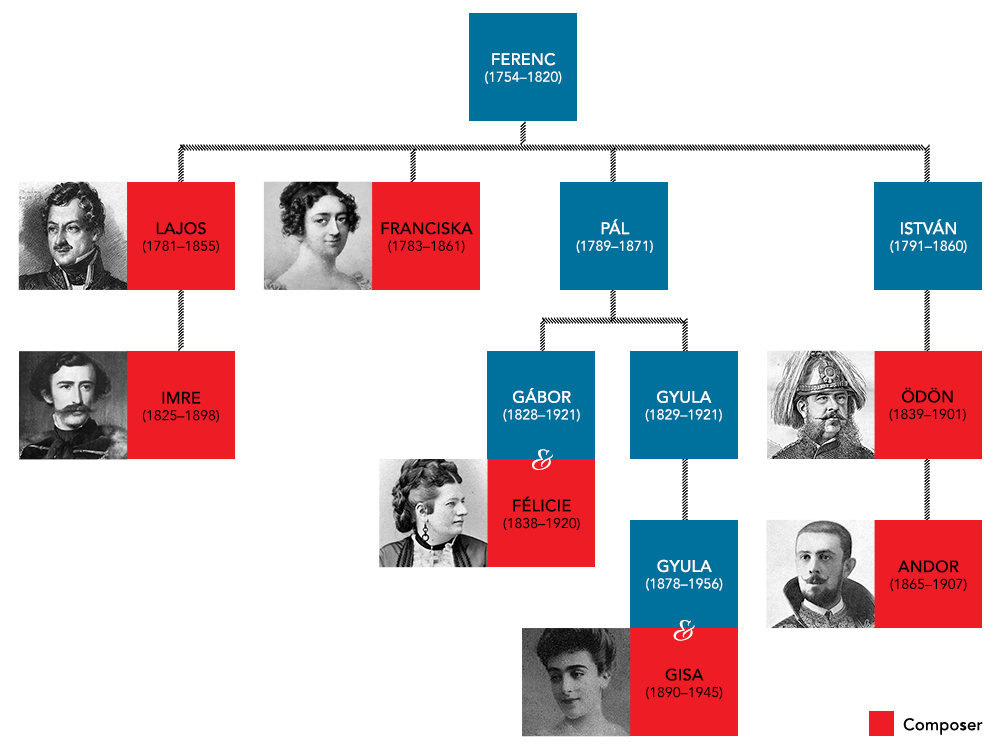
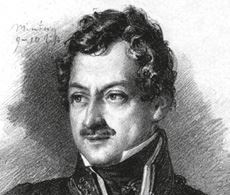
Painting by Franz Hanfstängl, photograph owned by Széchényi-Archiv of Lajos Széchenyi, Wien
Lajos (Ludwig) Széchényi (1781–1855): Lajos, eldest son of Ferenc Széchényi, studied law. He took part in the nobles’ rebellion against Napoleon, took charge of a group of 187 soldiers and fought at the battle of Győr in 1809, where he was wounded. From 1824 to 1845 Lajos Széchényi was chief court chamberlain for the Archduchess Sophie. Lajos was a talented actor, wrote German poetry, composed music and was a good pianist and singer. He wrote music for piano, songs, chamber music and orchestral works. Lajos also ran an impressive salon in Vienna and presented a young Franz Liszt in 1835, laying the foundations for friendly relations between the Széchényi family and Liszt that would be continued by Lajos’s brother István and son Imre.
Listen to an excerpt from Lajos Széchényi’s 3 Hungarian Dances
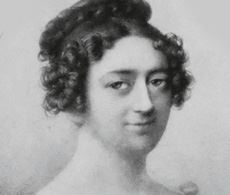
Portrait-collection of the Counts Széchényi by Viktor Széchényi, Budapest, Stephaneum Ny. (1924)
Franciska (Fanny) Széchényi-Batthyány (1783–1861) – Hungary’s first female composer: Franciska, eldest daughter of Ferenc Széchényi, was born in Vienna in 1783 and died in Pinkafő (now Pinkafeld in Austria) in 1861. She married Count Miklós Batthyány. Ferenc’s much loved daughter was a musician, a poet and a painter. During the Vienna Congress of 1814–15 Franciska made an impression with her outstanding piano-playing. Her own compositions were regularly performed at the church chapel in Pinkafeld, where she played the organ and conducted the choir. She composed works for piano, songs, duets and religious works (liturgical songs, numerous four-part choral works, a German Mass and a Latin Mass), which have all survived in manuscript form.
Listen to an excerpt from Franciska Széchényi’s 6 Ländler
Imre (Emerich) Széchényi (1825–1898): Imre, the eldest son from Lajos’s second marriage, to the Austrian Countess Françoise von Wurmbrand-Stuppach, was born in Vienna in 1825 and died in Budapest in 1898. At the age of 20 Imre entered the diplomatic service, first in Rome, then in 1848 he was posted to Stockholm. During 1850–51 he was based in Frankfurt, where he would become acquainted with Bismarck, who subsequently became Chancellor. In 1852 he was based in Brussels and Paris, and from the summer of 1854 in St Petersburg, where he met Johann Strauss and began a friendship that would last a lifetime. In 1860 he became ambassador in Naples, and in 1878 he was the ambassador of the Austro-Hungarian Empire in Berlin. Imre Széchényi’s musical career followed a similar trajectory to his work in the diplomatic service. He wrote songs, dances, chamber music and orchestral works.
Listen to an excerpt from Imre Széchényi’s 3 Walzer For Piano 4 Hands
Ödön (Edmond) Széchényi (1839–1922) – The composing pasha: Ödön, younger son of István Széchényi and Countess Crescentia von Seilern-Aspang, was born in Bratislava in 1839 and died in Constantinople in 1922. In 1874 he moved to Constantinople with the aim of setting up a fire brigade at the court of Sultan Abdul Aziz, an aim which he achieved with alacrity. This fire brigade, organised along strict military lines, was subject to the ministry of war, with Count Széchényi Pascha at the head of the battalion. There are a number of piano works and one song known to have been composed by Ödön Széchényi. His works for the fire brigade orchestra have been lost.
Listen to an excerpt from Ödön Széchényi’s Regatta Foursome
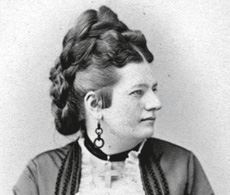
Portrait-collection of the Counts Széchényi by Viktor Széchényi, Budapest, Stephaneum Ny., (1924)
Félicie Széchényi, née Horváth de Szentgyörgy (1838–1920): Félicie, wife of Ferenc Széchényi’s grandson Gábor, was born in Pest in 1838 and died in 1920 in Hegyfalu, in Hungary. In 1873 Félicie gave birth to her daughter Eugénia, 14 years into her marriage. Her dances, including the polkas Herzblatt (‘Sweetheart’), 7 Uhr früh (‘7 in the Morning’) and Dorette are lively, melodious and atmospheric pieces.
Listen to an excerpt from Félicie Széchényi’s 7 In The Morning
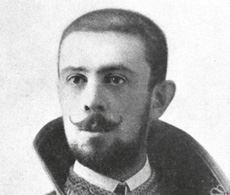
Portrait-collection of the Counts Széchényi by Viktor Széchényi, Budapest, Stephaneum Ny. (1924)
Andor Széchényi (1865–1907): Andor (András) was the son of Ödön Széchényi from his first marriage to Baroness Almay. He was born in Pest in 1865 and died in 1907, in Nieder-Ollwitz. Young Andor appears to have been a hot-tempered young man, having in his youth survived four pistol duels and seven sword duels. Between 1888 and 1890 he travelled to the South Sea Islands, then to Somalia from 1891 to 1893, subsequently making his way via Russia, Persia and India to China. Andor also went on test flights with dirigible airships. Andor was not only an accomplished swordsman and sharpshooter, but a good pianist. He composed dances for the piano.
Listen to an excerpt from Andor Széchényi’s One More March!
Gisa Széchényi, née Haas von Teichen (1890–1945) – the world’s first female film composer: Gisa, wife of Ferenc Széchényi’s great-grandson, the naval officer Gyula, was born in Vienna in 1890, dying there in 1945. Baroness Gisella was the daughter of the industrial magnate Baron Philipp Haas von Teichen. Gisa Haas von Teichen was a beautiful woman with a gift for music, and an excellent pianist. Gisa wrote the music for her father’s melodrama Abendsonne (‘Setting Sun’), which received its first, highly successful performance on 6 April 1911 at the Vienna City Theatre. A film of Abendsonne was also made in 1917 – a silent film, shown with piano accompaniment. The music was a great success and it was reported in the Viennese press on the occasion of the 1917 première that ‘Countess Széchényi-Haas contributed the delightful, heartfelt music.’
Listen to an excerpt from Gisa Széchényi’s Setting Sun
The Széchényi dynasty stood at the heart of Hungary’s political and musical life in the 19th and 20th centuries. Their ideal milieu lay in vibrant, melodious dance-patterned music. Grand Piano is pleased to present a unique collection of lively music from the Széchényi family, presented by pianists István Kassai and György Lázár. This rare album of world premiere recordings chronicles the musical contributions of a family dynasty over the course of 120 years.
‘To put the works of a compositional dynasty on one disc is a commendable effort, as it allows listeners to hear how musical language is transformed from fathers to daughters and sons from the 19th to the 20th centuries.’ – American Record Guide

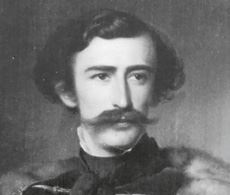
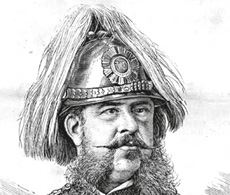

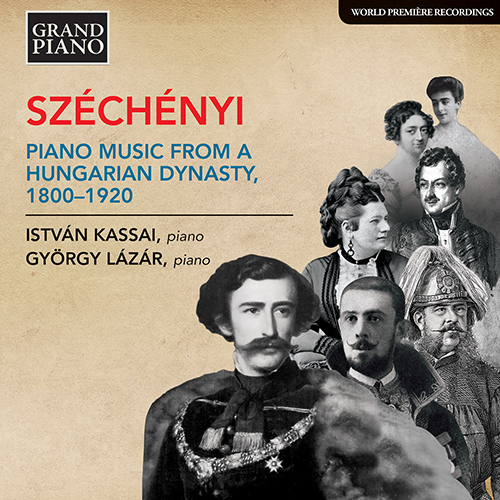


 Grand Piano has gained a reputation for producing high quality recordings of rare keyboard gems. Dedicated to the exploration of undiscovered piano repertoire, the label specialises in complete cycles of piano works by many lesser-known composers, whose output might otherwise have remained unknown and unrecorded.
Grand Piano has gained a reputation for producing high quality recordings of rare keyboard gems. Dedicated to the exploration of undiscovered piano repertoire, the label specialises in complete cycles of piano works by many lesser-known composers, whose output might otherwise have remained unknown and unrecorded.






